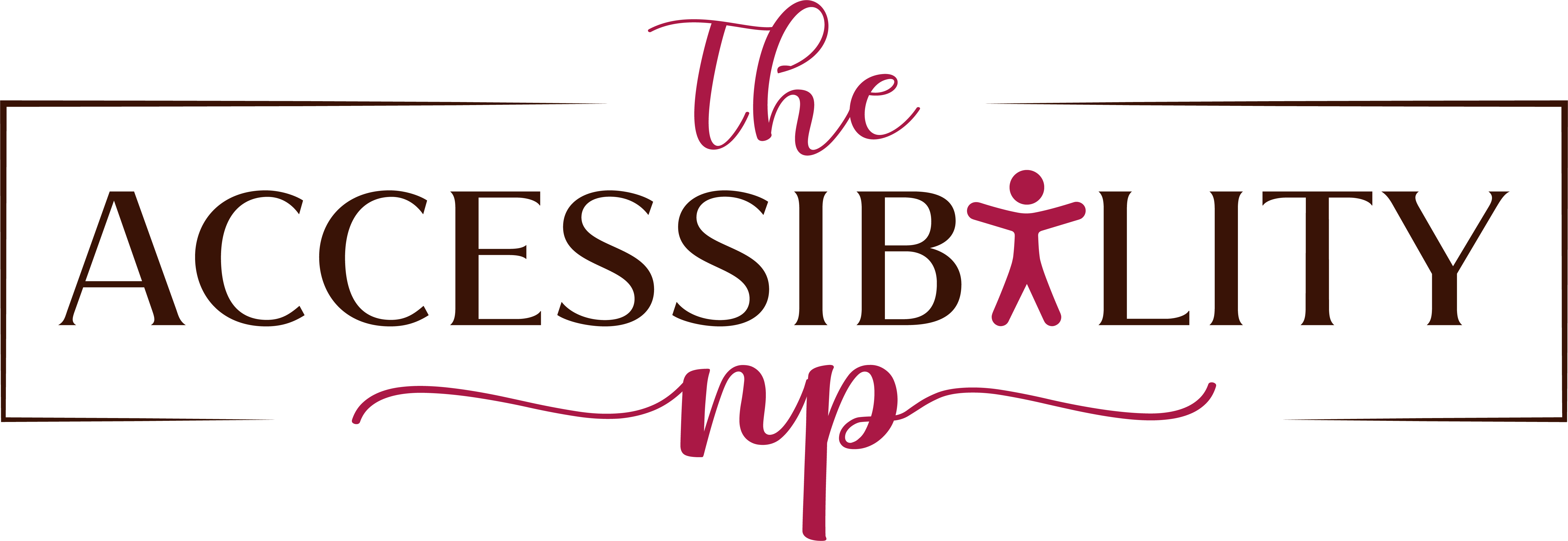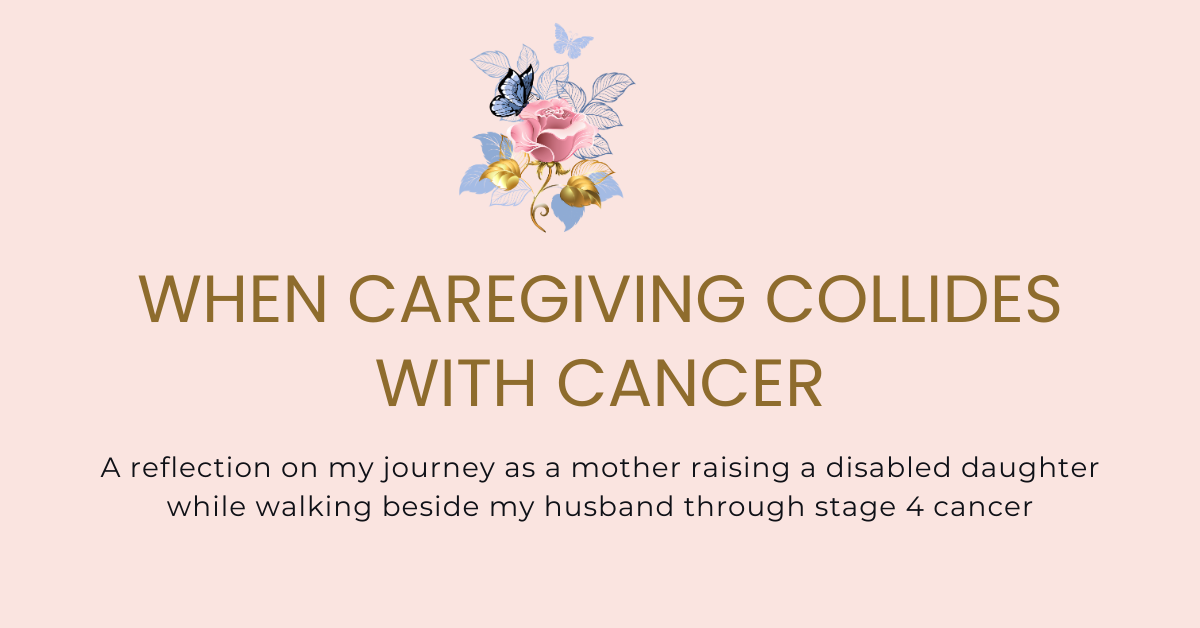Seven months ago, our world split open. My husband—my steady partner in the everyday chaos of raising our disabled daughter—was diagnosed with stage 4 lung cancer. By the time we heard the words, it had already metastasized.
I am a mother to a 14-year-old who is disabled and requires constant advocacy and care. I am also a wife. I am now a caregiver twice over—navigating IEP meetings and supports for my daughter while also walking through scans, chemo infusions, and radiation treatments with my husband. I know I am not the only one living inside this kind of storm. And if you are here, reading this, maybe you are in it too—or maybe you fear you might one day be.
This is not the life any of us imagined. But it is the life we wake up to. And I want to tell the truth about what it feels like.
The Diagnosis That Changes Everything
We had already been living in survival mode for years. Parents of disabled children don’t often say that out loud, but it’s true. Survival mode is waking up every day to a set of challenges that never go away. It’s the phone calls from school. The IEP meetings that drag on for hours. The battles to get the right accommodations in place. The endless forms and systems that seem designed to make access harder, not easier.
So when the doctor looked at us and said stage 4 cancer, I didn’t feel shock so much as I felt disbelief that another mountain had been placed in front of us. How could this be our story too? Hadn’t we already met our quota of hard?
But cancer doesn’t negotiate. It simply moves in.
Two Care Plans, One Heart
My days are now divided into two care plans. One is color-coded in my head for my daughter—her therapy appointments, her accommodations at school, her communication supports, her day-to-day routines. The other is for my husband—the chemo cycles, the radiation side effects, the oncologist appointments, the endless insurance battles.
There are mornings when I forget which professional I’m supposed to be calling first. Even the folders in my bag have started to blur together.
I sit in one meeting advocating for my daughter’s right to be included, then later that same afternoon, I sit in another asking about new treatment options to slow the cancer’s spread.
It feels like living inside two parallel universes—both requiring my full presence, both pulling on the same heart.
What Grief Looks Like in Real Time
Here’s the thing about anticipatory grief—it doesn’t wait politely in the corner. It crashes into your day in the middle of making dinner or folding laundry. It shows up in the grocery store when you’re trying to remember which juice boxes your daughter will actually drink. It wakes you up at night when the house is finally still.
There is grief for what is happening to my husband’s body. Grief for what our daughter might lose. Grief for the dreams we had of our future. And layered into that grief is guilt—because I can’t be everywhere at once.
When my husband is at an appointment, I want to be by his side every moment. But my daughter still needs her routines, her comfort, her supports. When I am holding her hand through a meltdown, I feel the absence of being with him. It is a relentless tug-of-war.
The Bond Between Father and Daughter
The hardest part of this journey has been watching the bond between my husband and our daughter shift under the weight of cancer. To her, he isn’t just Dad—he’s her very best friend. He’s the one who understands her quirks, who knows the exact way she likes her fries, who will watch her favorite movies again and again without complaint.
She doesn’t fully grasp the medical words, but she knows something is different. She notices the oxygen tanks, the walker, the fatigue that creeps in after treatments. But she doesn’t see him as sick. She sees him as her safe place.
And that’s the heartbreak. Because even as we try to prepare her for the reality of cancer, she keeps loving him with her whole heart, in the most uncomplicated way. And maybe that’s the gift—reminding us both that love is bigger than illness.
The Loneliness of the In-Between
One of the hardest parts has been the loneliness.
Friends mean well. Family tries to help. But unless someone has stood in these shoes—caring for a disabled child while also facing a partner’s terminal diagnosis—they cannot truly understand the exhaustion that becomes bone-deep.
It is not the exhaustion of one bad week. It is the exhaustion of months and years layered on top of each other. It is the kind of tired that makes your chest ache when you finally lie down at night.
There are no support groups for “parents who are also spousal caregivers navigating terminal cancer and disability at the same time.” Sometimes I wish there were.
So if you are reading this and you feel that loneliness too, please know—you are not invisible.
Small Moments of Survival
We survive this life one small moment at a time.
For me, it has looked like learning to accept help, even when my instinct is to say “I’ve got it.” It has looked like crying in the shower so my daughter doesn’t see. It has looked like laughing at silly TikToks with my husband on nights when the nausea eases and he can breathe a little easier.
Some days survival looks like frozen chicken nuggets for dinner because I simply can’t do more. Other days it looks like singing Disney songs with my daughter in the car, pretending for a moment that the world outside doesn’t exist.
There is no perfection in this life. Only survival.
Faith, Therapy, and Fragile Hope
I have a t-shirt that says, “I go to God and therapy.” It has never felt truer than it does now.
Because the truth is—I need both. I need the anchor of my faith to remind me that I am not alone in this storm, that even when I can’t see the way forward, God already knows the path. And I need therapy, a space where I can let the dam break and say the things I sometimes feel too guilty to voice out loud.
One does not replace the other. Prayer steadies my spirit. Therapy steadies my mind. Together, they keep me from falling apart.
I’ve learned that hope doesn’t always look like cure. Sometimes hope looks like more time. Sometimes hope looks like a good scan after months of bad ones. Sometimes hope looks like laughter around the dinner table, even if someone is hooked up to oxygen.
Talking to Our Daughter
Explaining cancer to a 14-year-old who is disabled is its own kind of heartbreak. She knows her dad is sick. She sees the changes in his routine, the days he needs more rest, the way our schedule now bends around treatment days.
We use stories and pictures. We use honesty, but in doses she can hold. We tell her that Daddy’s body is fighting very hard, and that our job is to help him feel comfortable and loved.
And in the middle of all that, she teaches us. Her resilience, her ability to live fully in the moment, her way of loving without fear—these are lessons I did not expect.
To the Parents Who Are Here Too
If you are a mother or father living inside this reality—caring for your disabled child while also loving a spouse through terminal illness—this is what I want to say to you:
You are not weak for feeling broken. You are not failing for being exhausted. You are not alone, even when it feels like you are.
Take the help when it is offered. Lower the bar on what “success” looks like. Cry when you need to. Laugh when you can. Know that your love—your presence—is enough.
I cannot promise you it will get easier. But I can promise you that you are not walking it alone. Somewhere, another parent is breathing through the same fear, carrying the same double load, whispering the same prayers.
A Heart Still Beating With Love
I write these words because silence only deepens the isolation. And if I can be a voice saying, me too, then maybe someone else will breathe easier for a moment.
I don’t know what tomorrow holds for my husband. I don’t know how much time we will have together. I don’t know how our daughter will handle the changes ahead.
But I do know that extraordinary love is holding us together. Not perfect love. Not easy love. But extraordinary love—the kind that shows up even when life feels impossible.

